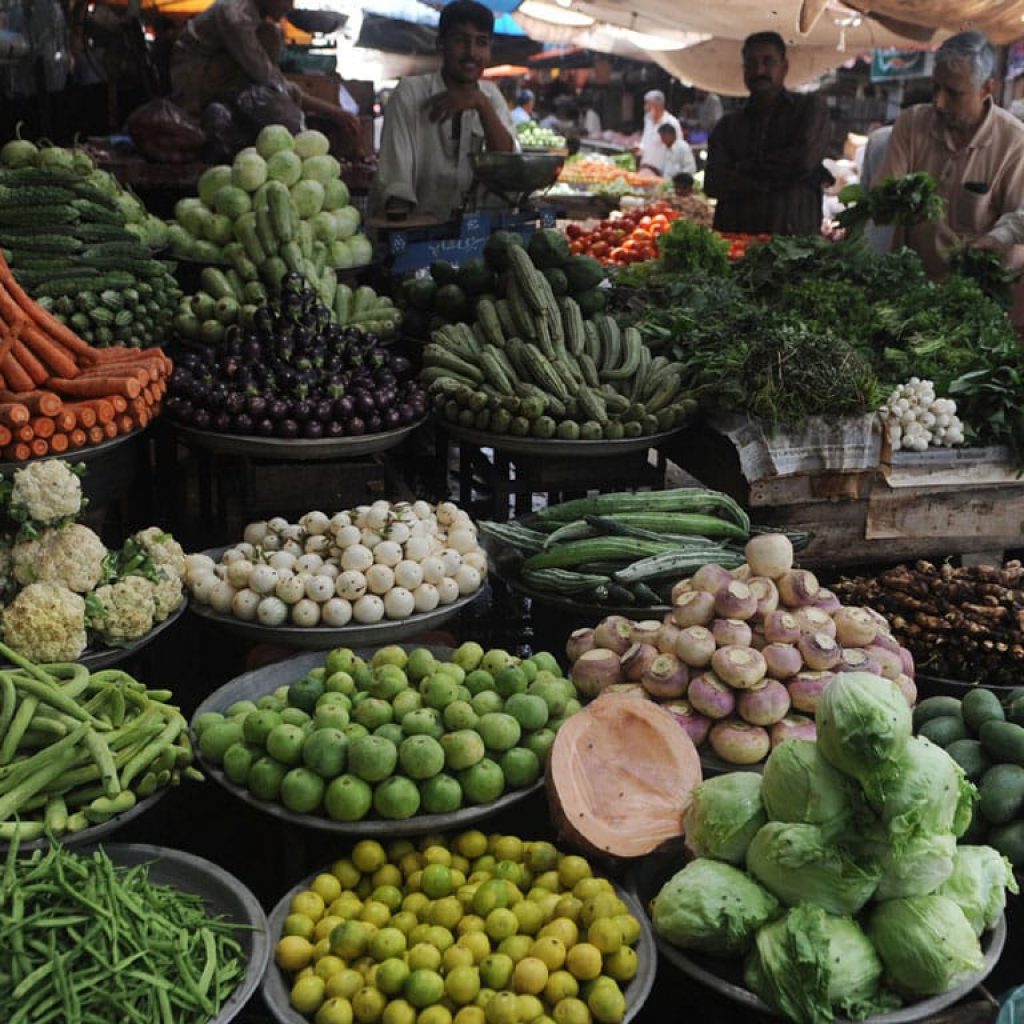Pakistan’s consumer’s inflation clocked in at 9.7 percent on a year-on-year (YoY) basis in June 2021 as compared to an increase of 10.9 percent in the previous month and 8.6 percent in June 2020, as revealed by the Pakistan Bureau of Statistics (PBS).
According to the monthly review of price indices by the PBS, on a month-on-month (MoM) basis, it decreased by 0.2 percent in June 2021 as compared to an increase of 0.1 percent in the previous month and an increase of 0.8 percent in June 2020.
ALSO READ
Pakistan’s Economy is Showing Significant Signs of Improvement: Report
The National CPI for June 2021 decreased by 0.24 percent over May 2021, and increased, by 9.70 percent over June 2020.
The CPI inflation Urban increased by 9.7 percent on a YoY basis in June 2021 as compared to an increase of 10.8 percent in the previous month and 7.6 percent in June 2020. On an MoM basis, it decreased by 0.4 percent in June 2021 as compared to an increase of 0.2 percent in the previous month and an increase of 0.7 percent in June 2020.
The CPI inflation Rural increased by 9.7 percent on a YoY basis in June 2021 as compared to an increase of 10.9 percent in the previous month and 10.0 percent in June 2020. On an MoM basis, it decreased by 0.1 percent in June 2021 as compared to a decrease of 0.03 percent in the previous month, and an increase of 1.0 percent in June 2020.
The Sensitive Price Index (SPI) inflation on a YoY increased by 17.6 percent in June 2021 as compared to an increase of 19.7 percent a month earlier and an increase of 11.5 percent in June 2020. On an MoM basis, it decreased by 0.4 percent in June 2021 as compared to an increase of 0.8 percent a month earlier and an increase of 1.4 percent in June 2020.
ALSO READ
Pakistan’s Oil Sales Rose by 18% YoY in FY2021
The Wholesale Price Index (WPI) inflation on a YoY basis increased by 20.9 percent in June 2021 as compared to an increase of 19.4 percent a month earlier and an increase of 0.9 percent in June 2020. On an MoM basis, it increased by 0.9 percent in June 2021 as compared to an increase of 0.3 percent a month earlier and a decrease of 0.3 percent in June 2020.
Measured by non-food non-energy, Urban increased by 6.7 percent on a YoY basis in June 2021 as compared to an increase of 6.8 percent in the previous month and 6.5 percent in June 2020.
On an MoM basis, it increased by 0.3 percent in June 2021 as compared to an increase of 0.2 percent in the previous month and an increase of 0.4 percent in June 2020.
Measured by non-food non-energy, Rural increased by 7.3 percent on a YoY basis in June 2021 as compared to an increase of 7.6 percent in the previous month and an increase of 8.8 percent in June 2020. On an MoM basis, it increased by 0.4 percent in June 2021 as compared to an increase of 0.3 percent in the previous month, and an increase of 0.7 percent in June 2020.
ALSO READ
Finance Minister Initiates Wheat and Sugar Procurement Drive
Measured by 20 percent weighted trimmed means Urban increased by 9.4 percent on a YoY basis in June 2021 as compared to 10 percent in the previous month and 7.4 percent in June 2020. On an MoM basis, it increased by 0.4 percent in June 2021 as compared to an increase of 0.2 percent in the previous month and an increase of 0.4 percent in June 2020.
Measured by 20 percent-weighted trimmed means Rural increased by 9.8 percent on a YoY basis in June 2021 as compared to 10.3 percent in the previous month and by 9.9 percent in June 2020. On an MoM basis, it increased by 0.6 percent in June 2021 as compared to an increase of 0.4 percent in the previous month and an increase of 0.9 percent in June 2020.
According to the PBS data, the top few commodities that varied from the previous month and contributed to Urban CPI among the foods that registered an increase are tomatoes (28.94 percent), onions (14.97 percent), eggs (4.37 percent), vegetables (3.11 percent), meat (2.85 percent), gur (1.85 percent), wheat (1.52 percent), vegetable ghee (1.36 percent), pulse masoor (1.26 percent), and mustard oil (1.21 percent); and decreased among chicken (36.86 percent), fruits (20.07 percent), pulse moong (6.10 percent), fish (1.91 percent), pulse gram (1.82 percent), and pulse mash (1.24 percent).
ALSO READ
Pakistan Had its Highest Ever Exports in FY 2021: Razak Dawood
Among the non-food items that registered an increase are Liquefied Hydrocarbons (26.26 percent), motor fuel (3.84 percent), personal effects (2.47 percent), and construction items (0.73 percent); and decreased in transport services (0.58 percent).
On a YoY basis, the top few commodities that varied from the previous year and contributed to the UCPI among the food items that registered an increase are eggs (32.88 percent), mustard oil (32.34 percent), vegetable ghee (23.75 percent), condiments and spices (23.27 percent), cooking oil (21.93 percent), sugar (21.54 percent), tomatoes (19.67 percent), wheat (18.99 percent), meat (16.66 percent), and milk (14.19 percent); and decreased among pulse moong (20.17 percent), potatoes (16.42 percent), fruits (12.75 percent), onions (5.07 percent), and pulse masoor (2.43 percent).
Among the non-food that increased are motor fuel (40.48 percent), liquefied hydrocarbons (30.92 percent), electricity charges (21.13 percent), footwear (16.29 percent), cleaning and laundering (13.36 percent), clinic fee (13.15 percent), hosiery (12.6 percent), and woolen garments (12.08 percent).
The top few commodities that varied from the previous month and contributed to the Rural CPI and that increased among the food items are tomatoes (26.76 percent), vegetables (9.09 percent), eggs (4.27 percent), mustard oil (3.11 percent), wheat (3.11 percent), gur (2.49 percent), milk (2.20 percent), and cooking oil (1.23 percent); and decreased among chicken (32.50 percent), fruits (12.58 percent), pulse moong (7.92 percent), pulse mash (2.12 percent), potatoes (1.16 percent), and sugar (0.93 percent).
Among the non-food prices that increased are liquefied hydrocarbons (13.53 percent), personal effects (2.66 percent), furniture and furnishing (2.22 percent), motor vehicles accessories (1.47 percent), hosiery (1.32 percent), and motor fuels (0.93 percent); and decreased in transport services (0.58 percent).
ALSO READ
Cellular Operators Call for Immediate Withdrawal of New Tax on Voice Calls
On a YoY basis, the top few commodities that varied from the previous year and increased and contributed to Rural CPI are eggs (37.97 percent), mustard oil (31.75 percent), cooking oil (30.81 percent), vegetable ghee (26.84 percent), tomatoes (23.86 percent), sugar (20.69 percent), wheat (20.09 percent), meat (16.2 percent), butter (12.64 percent), and rice (9.98 percent); and decreased among pulse moong (25.23 percent), potatoes (19.38 percent), onions (12.73 percent), fruits (11.77 percent), pulse masoor (2.59 percent), and condiments and spices (1.92 percent).
Among the non-food items’ prices that increased are motor fuels (38.71 percent), water supply (36.99 percent), liquefied hydrocarbons (27.27 percent), electricity charges (21.13 percent), hosiery (16.68 percent), clinic fee (16.25 percent), plastic products (13.32 percent), and woolen cloth (13.2 percent); and decreased in transport services (2.81 percent).
The top few commodities that varied from the previous month and contributed to the WPI inflation and increased include vegetables (23.00 percent), stimulant & spice crops (16.86 percent), bajra (16.27 percent), fibre crops (8.26 percent), steel bar & sheets (5.88 percent), lighting equipment (5.76 percent), furnace oil (3.97 percent), meat (3.61 percent), vegetable ghee (2.36 percent), fertilizers (2.04 percent), and eggs (1.90 percent); and decreased in poultry (38.97 percent), fruits (23.53 percent), maize (7.03 percent), potatoes (3.71 percent), jowar (3.48 percent) and pulses (2.57 percent).
ALSO READ
Govt Notifies Increase in Petrol Prices
The YoY top few commodities that varied from the previous year (June 2020) and increased are kerosene oil (127.65 percent), bajra (98.63 percent), furnace oil (86.62 percent), diesel (72.14 percent), fibre crops (61.82 percent), spices (48.14 percent), motor spirit (46.05 percent), timber (39.26 percent), cotton fabrics (37.39 percent), eggs (32.83 percent), vegetable ghee (31.34 percent), pesticides (28.49 percent), cotton yarn (23.46 percent), sugar (22.15 percent), towels (20.47 percent), and fertilizers (19.52 percent); and decreased among potatoes (22.47 percent), poultry (4.92 percent), and glass sheets (1.11 percent)
The post Consumer Inflation Falls to 9.7% YoY in June 2021 appeared first on .


